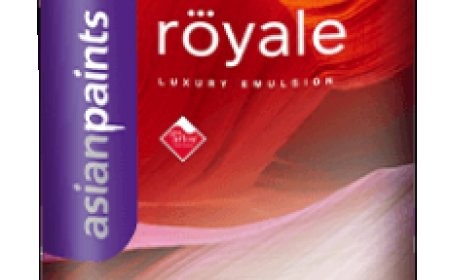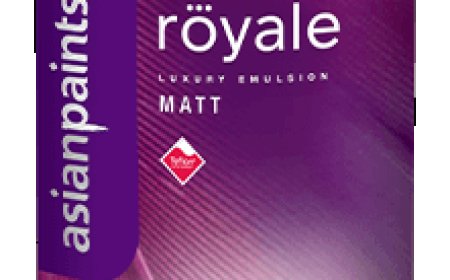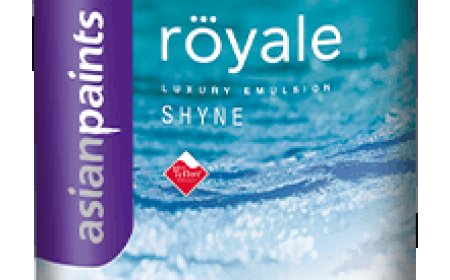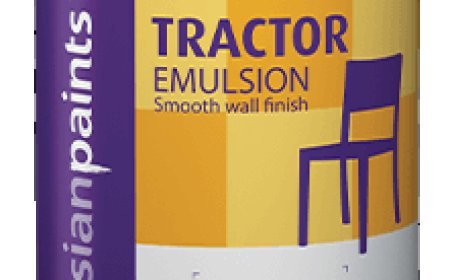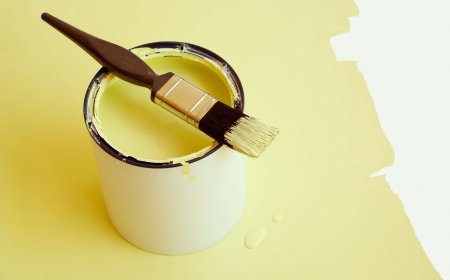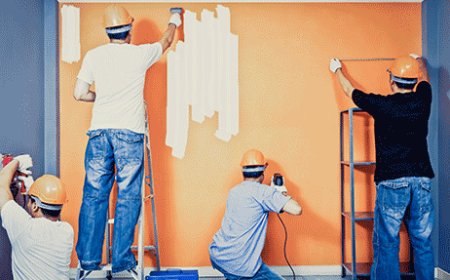What is Plastic Paints and it's Types?
What is Plastic Paints and it's Types? The type of paint you use can have a big impact on the look, longevity, and upkeep of your surfaces. Different paint kinds come in different finishes, such glossy, satin, or matte, which can change how your room looks overall. Furthermore, some paints are more strong and resistant to wear and tear, making them perfect for use in high-traffic areas or outdoors. If you're thinking about painting a room that will be subject to spills or stains, think about using paints that are simple to clean and touch up. The desired look can be achieved with little care and long-lasting durability by choosing the proper paint type.
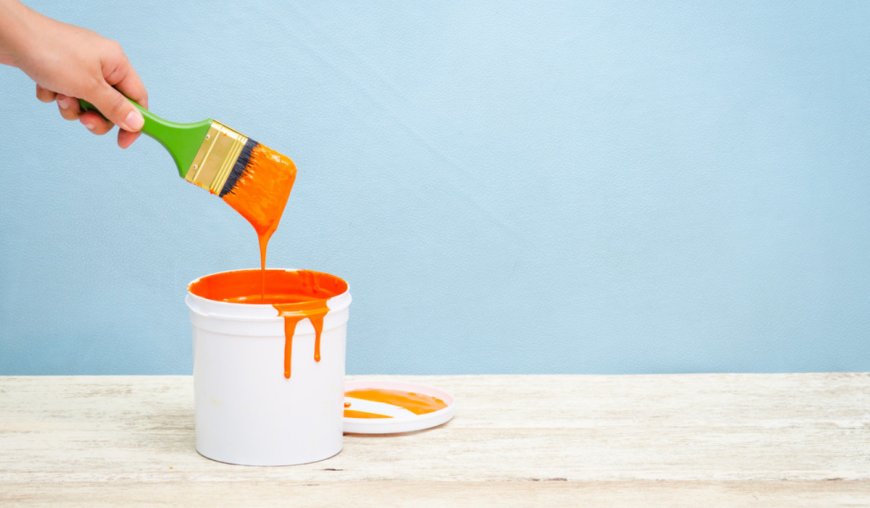
What is Plastic Paints and it's Types?
Introduction to Paint Types
Understanding the Importance of Choosing the Right Paint
Making the right paint choices for your home's exterior and interior walls is essential to protecting its integrity and beauty. Paints for interiors must retain their visual appeal while withstanding regular damage and use, including cleaning. When choosing paint for high-traffic areas, look for finishes that are long-lasting like satin or semi-gloss and take stain resistance and ease of washing into account. Paints used outside, however, must deal with unexpected conditions such as rain, sunlight, and temperature changes. Choose paints designed exclusively for outdoor usage, which provide superior protection against fading, cracking, and peeling. You can guarantee a durable and beautiful finish that improves the overall appeal of your house by selecting the appropriate paints for your interior and exterior walls.
The type of paint you use can have a big impact on the look, longevity, and upkeep of your surfaces. Different paint kinds come in different finishes, such glossy, satin, or matte, which can change how your room looks overall. Furthermore, some paints are more strong and resistant to wear and tear, making them perfect for use in high-traffic areas or outdoors. If you're thinking about painting a room that will be subject to spills or stains, think about using paints that are simple to clean and touch up. The desired look can be achieved with little care and long-lasting durability by choosing the proper paint type.
Interior Wall Paints
Emulsion Paint
Emulsion paint is a popular choice for interior walls because of its many benefits and qualities. It is available in a broad range of colors and sheens, from glossy to matte, providing endless design opportunities. Applying emulsion paint is simple, it dries fast, and it smells good, so it's good for do-it-yourself jobs and interior spaces. The smooth, long-lasting finish it offers is stain-resistant and effortlessly cleanable, which makes it perfect for high-traffic areas like bathrooms and kitchens where wetness is usual. Furthermore, emulsion paint is frequently developed with additional properties such as mildew and fungus resistance, making it ideal for damp situations. All in all, emulsion paint provides a superb combination of longevity, ease of maintenance, and look.
When it comes to paint finishes, there are numerous possibilities to fit a variety of tastes and demands. Matte coatings provide a flat, non-reflective look and are excellent for covering wall imperfection. For places with moderate traffic, eggshell finishes are a good choice since they have a weak shine and provide a somewhat stronger surface that is easy to maintain. High-traffic areas like hallways and kitchens are ideal for satin finishes because they are very washable, have a small sheen that provides depth to walls, and are quite durable. You can obtain the desired style and utility for your area with the help of each finish, each of which has special features of its own.
Latex Paint
The use of latex paint on interior walls is a simple and flexible choice. It has multiple finishes, ranging from glossy to matte, providing a multitude of design options. Latex paint's ability to dry quickly allows you to apply multiple coats in a single day, which is one of its key advantages. It's ideal for do-it-yourself projects and busy places because it has a limited smell and is simple to clean with soap and water. It also lasts a long time because latex paint is highly durable and doesn't fade, split, or peel. Whether you're a beginner or an experienced painter, latex paint is a great option for interior walls because of the flexibility and simplicity of application.
There are various reasons why latex paint is unique when compared to other interior wall paint kinds. Oil-based paints take longer to dry and release more smells than latex paint, which makes it less comfortable to use—especially in occupied settings. In comparison to oil-based paints, latex paint also has a greater protection from breaking and fading over time. While latex paint is often easier to clean up after, it offers comparable durability to acrylic paints. Latex paint is a popular option for interior wall applications because it generally strikes a balance between performance, convenience of use, and environmental friendliness.
Oil-Based Paint
For interior walls, oil-based paints provide a beautiful shine and remarkable longevity. They produce a strong, long-lasting surface that can experience extreme wear and tear, making them perfect for high-traffic areas such as hallways and kitchens. Oil-based paints give walls a glossy shine that gives them depth and richness, making them look classy and polished. It's also easy to clean and maintain oil-based paints over time because they are extremely washable and stain resistant. Oil-based paints are popular for interior walls that require both style and resilience, ignoring the fact that they may take longer to dry and smell stronger when applied. This is because of their beautiful finish and long-lasting nature.
There are a few important factors to maintain in mind when painting your interior walls, as well as those related to application. To start with, make sure the surface is suitably prepared by washing, sanding, and priming as necessary to get the best outcome. Choose a suitable paint and finish depending on your preferences and the room's specific requirements. Use the right tools and methods when painting to get a smooth, equal coat. Allow enough time for painting to dry and repair before shifting furniture or hanging decorations. Maintain walls by cleaning them down with a solution of warm water and mild soap to get clear of pollutants and dirt, and take care of staining and spills as away to avoid them developing
Chalkboard Paint
Chalkboard paint is a unique combination of creativity and usefulness for interior walls. It transforms any surface into a written and movable chalkboard, giving you limitless options for personalizing and decorating your environment. Chalkboard paint offers a flexible canvas that is simple to personalize to your needs, whether you want to use it to take notes, make a calendar, or show off what you can create. It is also ideal for playrooms, kitchens, and home offices because it brings an unique and charming touch to any space. Chalkboard paint offers many creative possibilities, but it's also highly practical and non-toxic, guaranteeing years of fun and use. Your walls can become interactive works of art that both adults and children can enjoy by using chalkboard paint.
Choosing appropriate surfaces and applying the paint with the proper techniques is important when using chalkboard paint on interior walls. Smooth, non-porous surfaces such as metal, wood, or drywall are ideal for applying chalkboard paint. Make sure the surface is dust- and debris-free, smooth, and clean before painting. With a premium brush or roller, uniformly apply the paint, and observe the drying and curing schedule recommended by the manufacturer. Consider applying several coats and waiting for each coat to completely dry before applying the next for best effects. You may design a stylish and useful blackboard wall that gives your room personality and functionality by using proper surfaces and application methods.
Exterior Wall Paints
Acrylic Paint
Acrylic paint provides excellent weather resistance and durability when it comes to painting external walls. Rain, sunlight, and temperature changes don't harm acrylic paint's protective and flexible layer. Your external walls will continue to look bright for many years to come since it resists fading, cracking, and peeling over time. To maintain the finest possible look for your house, acrylic paint also requires little effort to clean. Acrylic paint is an excellent option for beautifying and safeguarding the exterior of your home because of its exceptional ability to stand up to weather.
Acrylic paint has various benefits over other types of outdoor wall paint. First of all, it offers outstanding protection against the elements, shielding your house from sunlight, rain, and changes in temperature. The flexible covering of the product provides long-lasting durability by avoiding peeling and breaking. It also takes little work to keep your external walls looking great because acrylic paint is simple to clean and maintain. Acrylic paint is more simple to use than oil-based paints since it dries more quickly and produces less smells. Acrylic paint is an excellent option for painting outdoor walls because of its exceptional mix of weatherproofing, durability, and ease of upkeep.
Masonry Paint
Masonry paint has particular qualities made to live with outside environments and is specifically made for exterior wall surfaces. It provides outstanding weatherproofing and moisture protection by creating a hard, protective layer that sticks effectively to masonry materials like concrete, brick, and stucco. The flexible nature of masonry paint also helps to avoid problems like the formation of mold and mildew by letting vapors of water escape while blocking entry of water. Because of its thick unity, surface flaws are filled in, producing a uniformly smooth finish. For improving and weatherproofing external wall surfaces, masonry paint is a great option because of its unique qualities.
Exterior wall surfaces covered with masonry paint provide excellent protection against mold, moisture, and other environmental issues. Water is unable to get into the walls and cause harm because of the barrier that its unique formula provides. Because of its ability to withstand moisture, the external walls remain hygienic and free of mold and mildew growth. The long-lasting resilience and maintenance of the wall's structural integrity are also guaranteed by masonry paint's protection from poor weather conditions like rain, UV rays, and temperature changes. Masonry paint is a fantastic option for maintaining the beauty and practicality of external walls because of its toughness against dampness and climatic elements.
Elastomeric Paint
Elastomeric paint is a popular choice for outdoor applications since it is extremely flexible and crack proof on exterior walls. Because of its special formula, the paint can adjust to surface changes in temperature and avoids the formation of fractures. Flexibility like this guarantees a long-term to weather-related damage, including structural movement and entry of water. Elastomeric paint forms a thick, rubber-like coating that fills cracks and gaps, adding an additional layer of protection against moisture and dampness. Elastomeric paint is a great choice for maintaining the stability and beauty of external walls, even under extreme temperatures, due to its flexibility and protection from cracking.
Elastomeric paint is flexible and ideal for a wide range of external wall applications, including plaster, the material, and even wood surfaces. Its flexibility allows it to deal with changing temperatures without peeling or breaking, making it perfect for environments with large temperature swings. This makes it an excellent option for areas with hot summers, chilly winters, or lots of rain. Elastomeric paint also provides good moisture protection, making it ideal for coastal areas or high-humidity zones. Elastomeric paint provides performance and durability that can handle the demands of many applications and climates, whether you're painting a residential house, commercial building, or industrial structure.
Specialized Paints for Specific Needs
Anti-Mold and Mildew Paint
Anti-mold and mildew paints have various advantages for moisture-prone regions. These paints have chemicals in them that avoid mildew and mold from growing, keeping the surrounding air clean and salubrious. These paints are particularly helpful for bathrooms, kitchens, and basements since they block the formation of mold and mildew, which also helps to lower chemicals and improve indoor air quality. Long-lasting durability is guaranteed by the additional protection against water damage that anti-mold and mildew paints offer to surfaces. These paints work wonders at keeping spaces that are subject to moisture fresh and hygienic by keeping mold and mildew at home while providing moisture protection.
Maintaining the fresh and bright look of your painted surfaces for an extended period of time requires taking steps to avoid problems and following maintenance guidelines. Begin by addressing any moisture issues in your home, such as leaks or humidity, as moisture can promote mold and mildew growth. To lower humidity levels, make sure spaces like kitchens and bathrooms have sufficient air flow. Keep an eye out for wear signs on painted surfaces, such as peeling or cracking, and take quick action to stop additional damage. Avoid using harsh products that might harm the paint when cleaning painted surfaces; substitute a gentle detergent and water solution to get clear of grime and soil. To keep the exterior looking new and maintaining protection from the weather, think about painting it every few years.
Heat-Reflective Paint
Outside wall paints that reflected heat can help save energy by controlling interior temperature and cutting down on air conditioning expenses. In order to avoid heat absorption and maintain a cooler interior, these paints include unique ingredients that reflect some of the sun's heat away from the structure. Heat-reflective paints minimize the need for air conditioning systems by minimizing the amount of heat that enters the building, which lowers energy consumption and utility expenditures. These paints can also assist extend the life of outdoor surfaces by reducing temperature-related stress and expansion. Heat-reflective paints, with their energy-saving powers, provide a long-term solution for keeping indoor temperatures comfortable while decreasing environmental impact and energy expenditures.
For best results, it's important to employ the proper techniques when applying heat-reflective paints on exterior walls. To guarantee appropriate loyalty, start by giving the surface a thorough cleaning and preparation. Using a brush, roller, or sprayer, uniformly apply the paint; for optimal results, follow the manufacturer's suggestions. To get the most heat-reflective qualities, it is important to apply multiple times when suggested. During application, keep in mind that variables like humidity and temperature can also have an impact on how well the paint works. Applying heat-reflective paints correctly can help lower interior temperatures and minimize heat absorption, which can save energy and improve comfort in your house or structure.
Eco-Friendly Paint Options
There are a few eco-friendly wall painting solutions to take into account while painting both interior and exterior walls. When it comes to environmental impact, water-based paints, also referred to as latex paints, are less dangerous than conventional oil-based paints because they contain fewer volatile organic compounds (VOCs). Another benefit of these paints is that they require less harsh chemicals to clean off with soap and water. Choose paints with low or zero volatile organic compounds (VOC) labels as well, as they reduce dangerous emissions and support better indoor air quality. For exterior walls, think about using environmentally friendly paints that are derived from natural materials with little effect on the environment, including sand, lime water, or plant-based resins. You could reduce your carbon footprint by selecting eco-friendly paint alternatives for your walls, both inside and outside.
When choosing paint for your walls, prioritize economy and wellness. Select paints with low volatile organic compound (VOC) content because these chemicals may damage indoor air quality and have an effect on your health. Choosing water-based paints is a smart move if you want to improve indoor air quality because they have less volatile organic compounds (VOCs) than oil-based paints. In addition, take into account paints that have earned certification from respectable agencies like EcoLogo or GREENGUARD, which guarantee that the goods fulfill high environmental and health requirements. Choosing paints that are packaged in waste products and made of natural, chemical-free substances contributes even more to environmental programs. You may make your home safer and greener by choosing wall paints that focus sustainability and health issues.
What's Your Reaction?







